
chriss
-
Posts
158 -
Joined
-
Last visited
Content Type
Profiles
Forums
Events
Posts posted by chriss
-
-
GWI is in great shape. Was there yesterday. Not much snow and a lot of ice.
-
A fall force of about 50-75KN is what it takes to kill a man.
Where is this from?
UIAA uses 12kN as the upper allowable limit. I remember something about this number coming from a military parachute study as the lower limit of serious injury/death.
-
The difference in fall force felt by the climber would be negligible. For anything but a tiny fall, the friction forces are be small compared to the other forces in the system. The rope would still stretch over its entire length, the friction will not "shorten" the length of rope.
Agreed.
The only way you'd effectively shorten your rope is if you have it truly jammed in a constriction, and even then it's likely that a bunch of the core can still pull through and stretch over the entire ropelength. Correct my if I'm wrong, but the core is about 80% of the strength of the rope.
Modern dynamic ropes are pretty amazing.
http://www.beal-planet.com/sport/anglais/facteurdechute.php
thearetical versus actual
-
Lucille
-
I took 4 biners and 3 slings, 2 singles and a double.
Partner had a 70 half rope. Doubled it for leads. Also right length for rappel.
-
-
How old is Allen Steck?
80 plus probably.
Steck as in Steck-Salathe'.
-
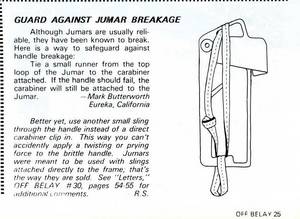
From Off Belay 30+ years ago.
-
-
Haven't fallen on a screw and don't plan on doing it, but I do know that the strength comes from the threads and that a 22cm screw has the same holding strength as a 13cm because they both have the same number of threads. You use longer screws just to get to "better" ice deeper in the surface.
But longer screws do hold your head at peace more than shorter screws.
Actually BD's 13cm screw has more threads than the 22. So it should hold more. But, every test has shown this to be false.
It's all about the quality of the ice.
-
http://www.jjgeng.com/html/body_ice_screw.html
A FEA done on both screw and ice.
Interesting for those who care for this type of thing.
-
Chriss that's not really true. The ropes will stretch at different rates. What if you clip them together for a piece or two (twin) then switch to doubles mode, then you fall on one rope entirely by itself, the other rope slack to a piece that you didn't fall far enough to weight? They're not going to move equally in that case are they?
I said up above that this was a no-no per manufacturers recs and a couple of people pointed out that you're not going to notice a differrence for 99.9999% of the falls you take. In theory you shouldn't do it because the ropes will move independently of one another. In practice your going to be fine but to say that both ropes will move at the same rate is false.
I should have been more descriptive in a post. I was refering to 2 ropes in the top biner, taking the force of the fall.
In theory the ropes could be moving in different directions, not just different speeds, in the lower biners. But there is not much of a chance of that but it could happen. I think the unweighted rope will be forced to move by the weighted rope before it damages it.
-
I keep hearing this rumor that clipping 1/2 ropes in the same biner will result in the ropes "moving at different rates" during a fall.
Are you falling further or faster on 1 rope than the other? No. Both ropes will move at the same rate. 1 rope may have more load than the other. But, so what. If they're both tied to you, they will move at the same rate.
-
Are those Cambell's Saddle Wedges? That stuff has to be 25 years old.
-
-
leaving a piton and leaving a bolt are the same thing, but perhaps I am wrong. On a pure ethical basis, are bolts and pitons seen differently?
At the risk of stating the obvious. They are different. You have to drill a hole for the bolt. The pin gets placed in the existing crack. With reasonable care, the pin can be removed and replaced with no damage to the rock.
The debate about ethics goes deeper still.
chris
-
I'll play...
'75 or so
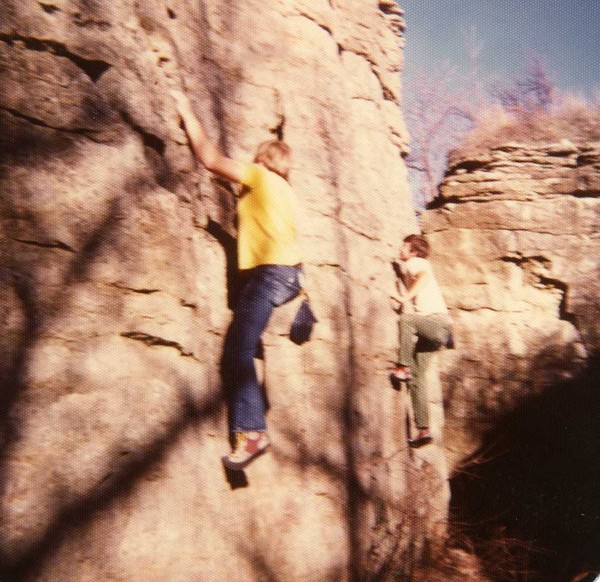
'77ish
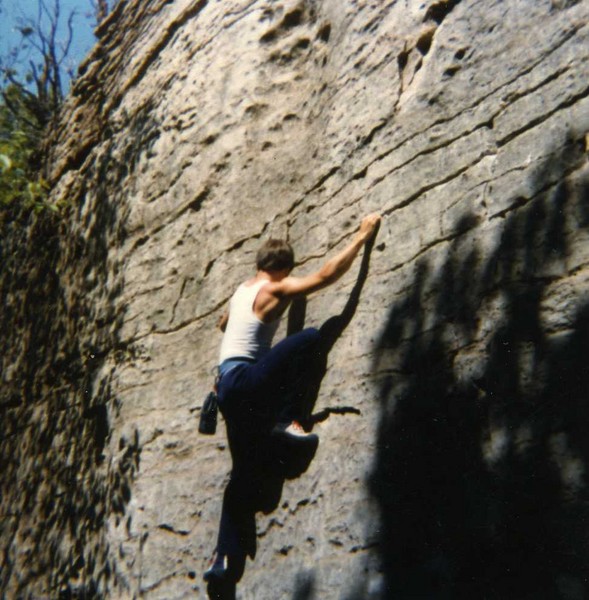
(bigger than expected, sorry)
chris
-
The Edelweiss is rated for 14 falls at 9kn, the Beal only 5 at 4.2kn. Yeah, the Edelweiss is a little heavier, and it has a 7.6% elongation (versus 10% for the Beal), but this seems like a lopsided match-up.
This is because Beal actually tested the Rando rope on one strand given that it was designed only to be used as such --Eldelweiss used two stands. I was looking at the Beal deal the other day.
I read somewhere that there was a new clasification and test for ropes used like this. I remember the new testing to be something like 80kg and a <1FF.
The Edelweiss looks to reporting the twin test results and the Beal the new testing. Compare them using their twin ratings.
-
Jens on pitch 4 or 5 of Mix-Masser
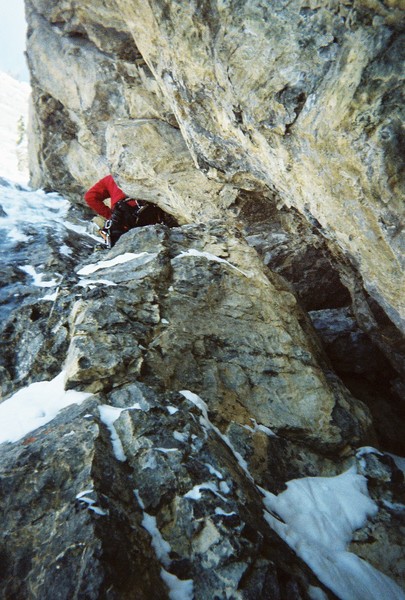
-
-
Sorry, slipped.
-
-
It measures 10 mm (~0.4 inch) at the top of the narrow profile (it measures 20 mm (~0.8 inch) at the top of the wide side). It is marked as a #7. Ergo, 1st generation.
I am no closer to a definitive answer.

I read #4 from the original post. That's what my measurements are about.
chris
sorry, edited typos
-
Measure it.
If it's the 1st generation it will about 3/8" at the top of the narrow profile. 2nd will only be about 1/4".
1st gen was 1-8 sizes. Then they came out with half sizes.
Then resized and renumbered 1-12. I don't remember the years.
chris

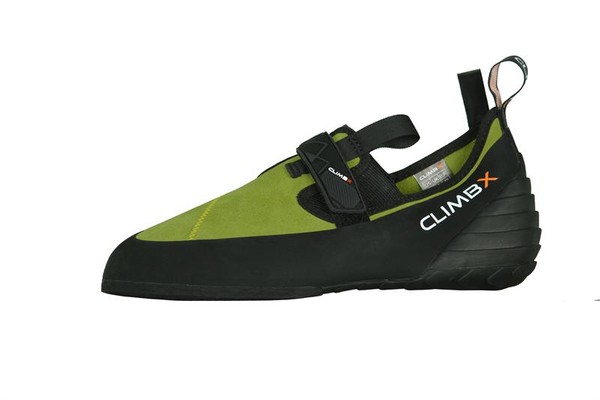

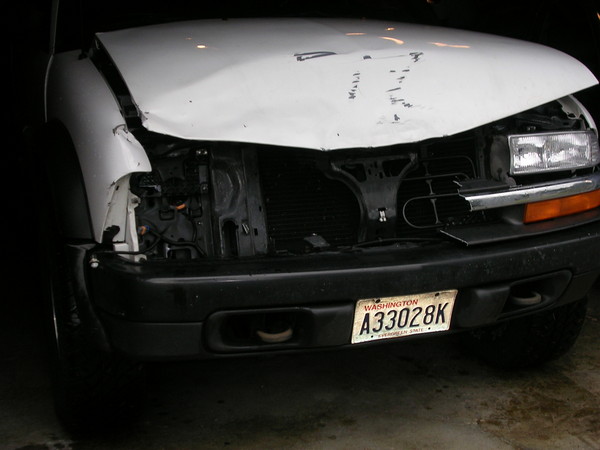
Regarding 2006 MT Hood incident
in Oregon Cascades
Posted
Were these 2 ever recovered?